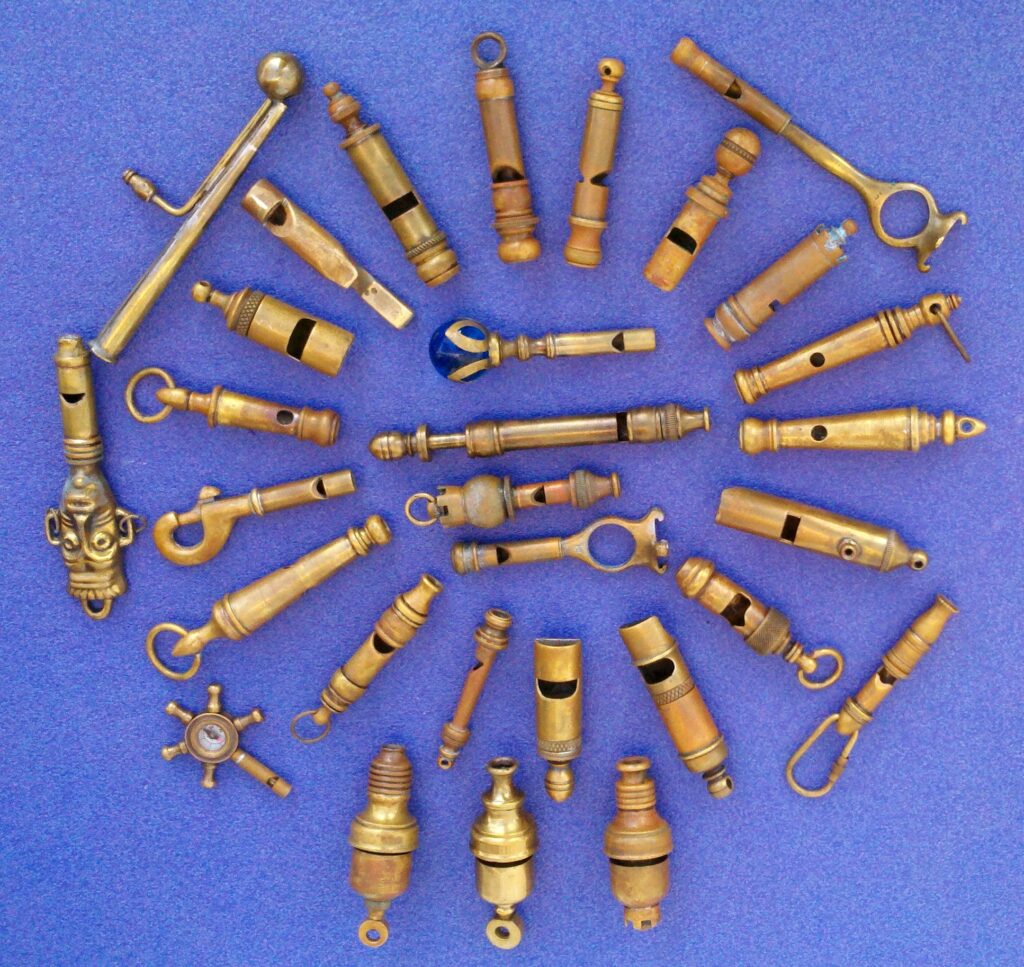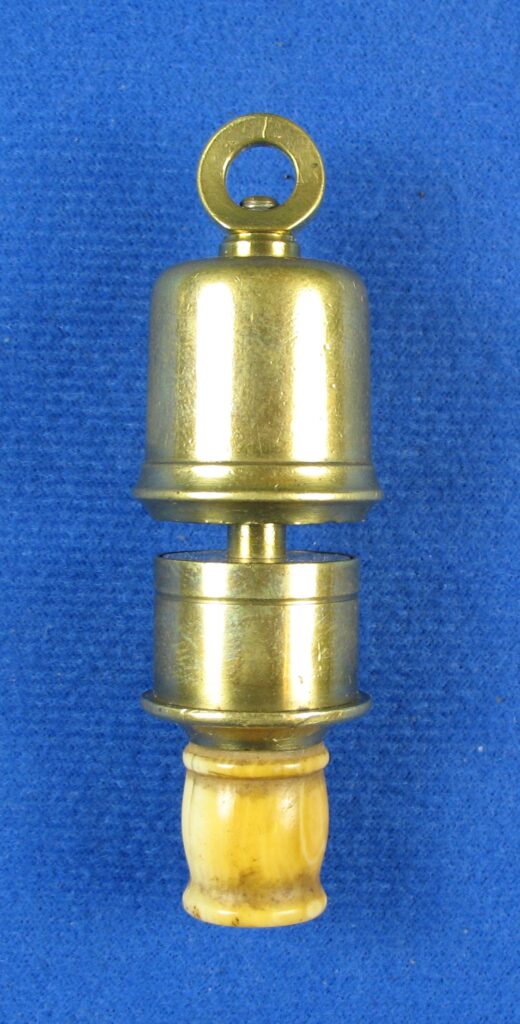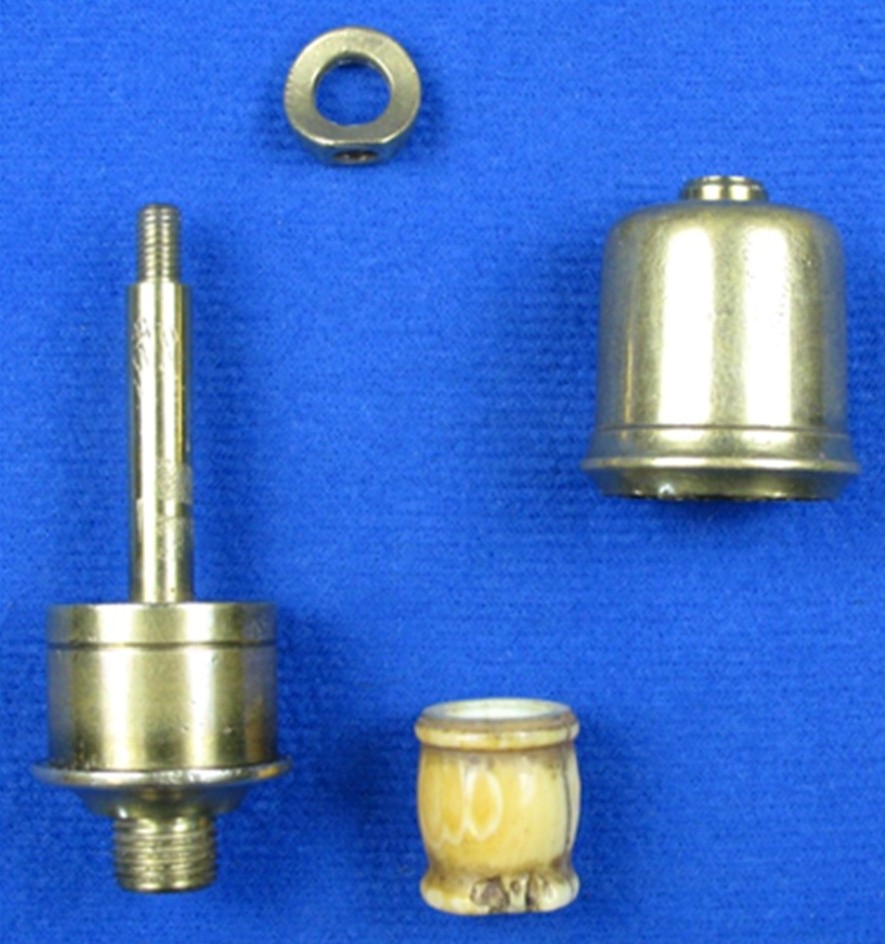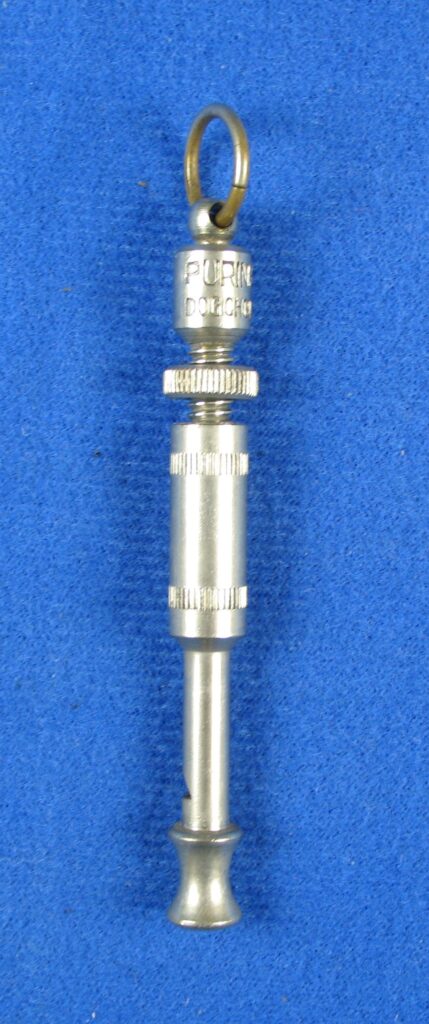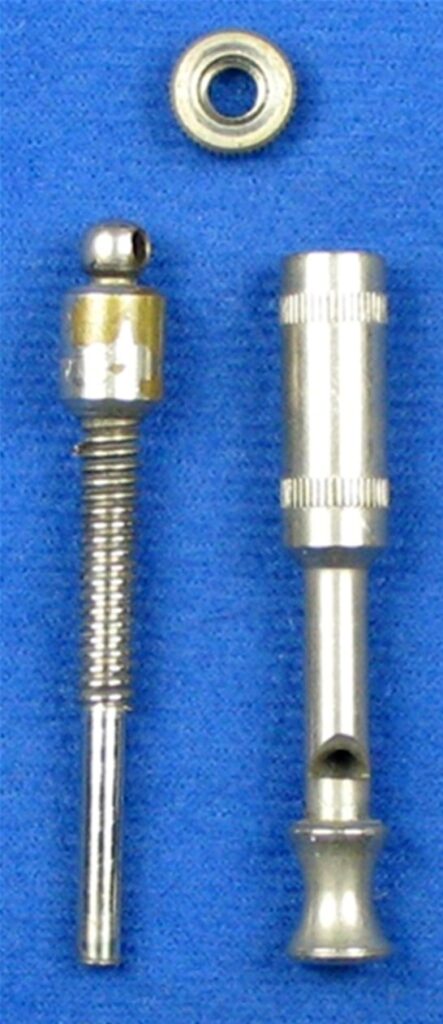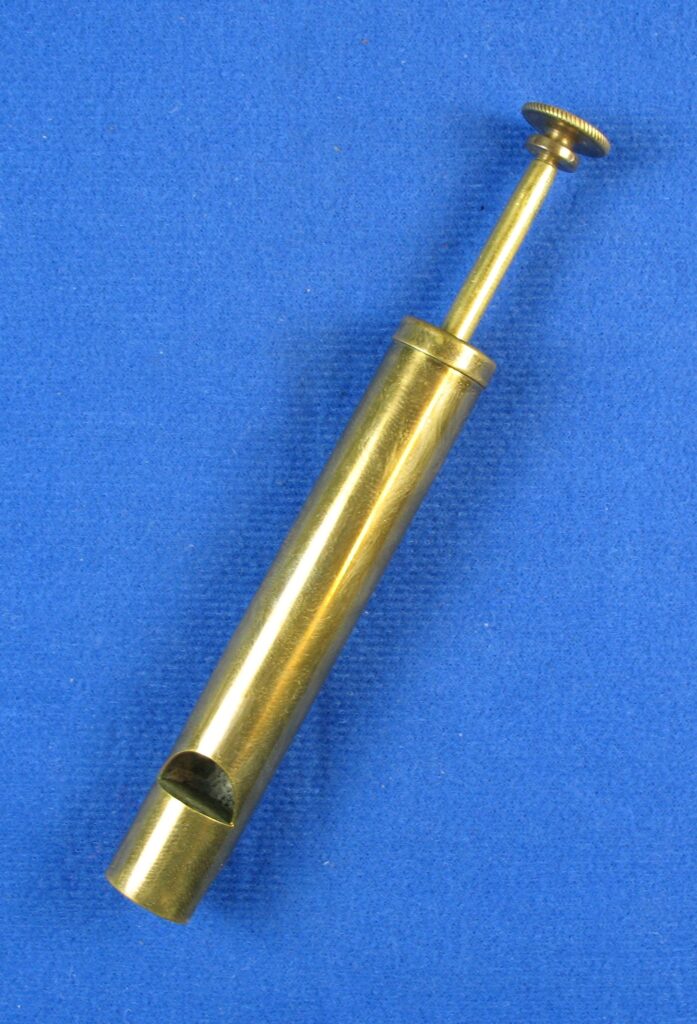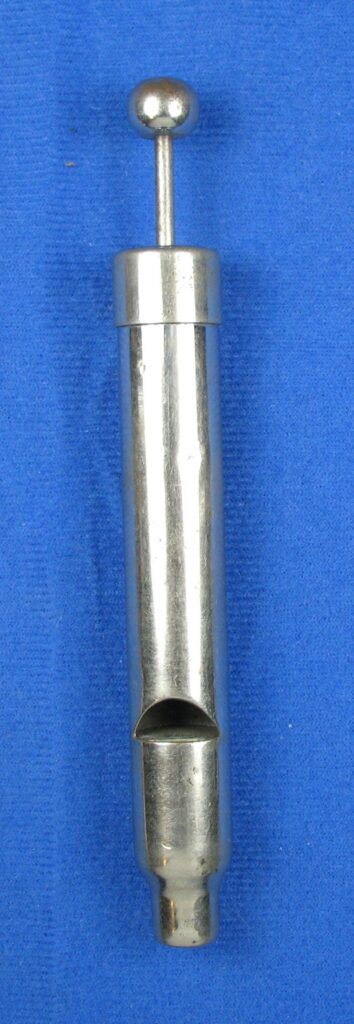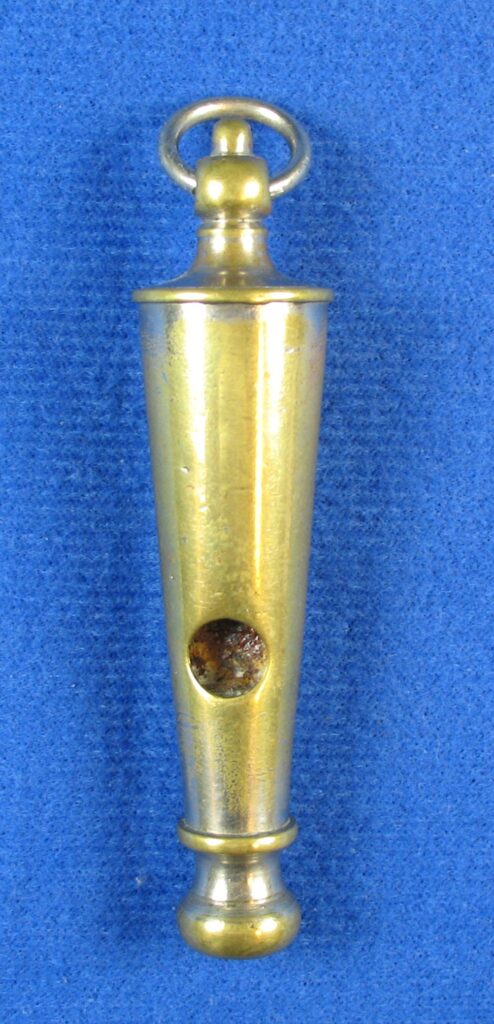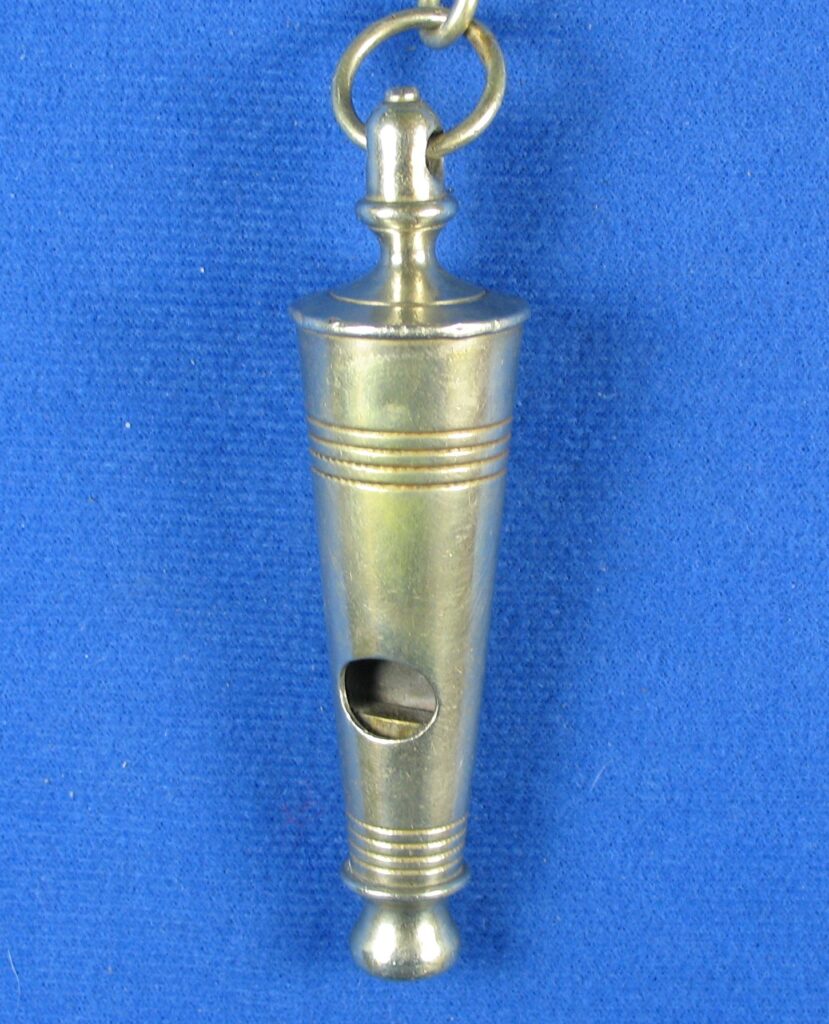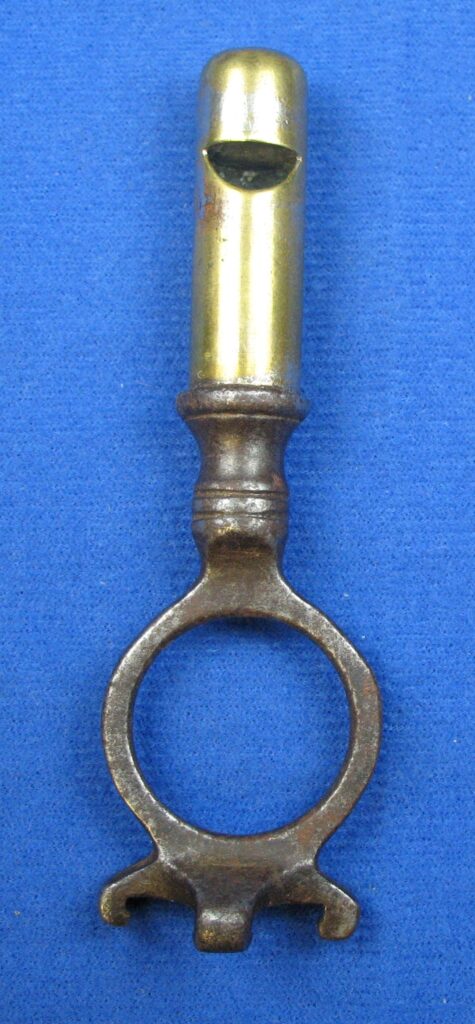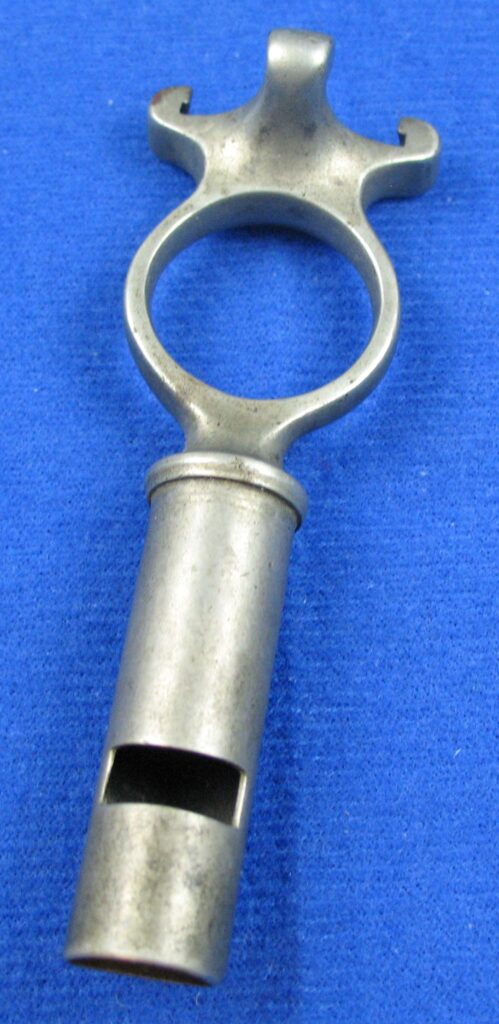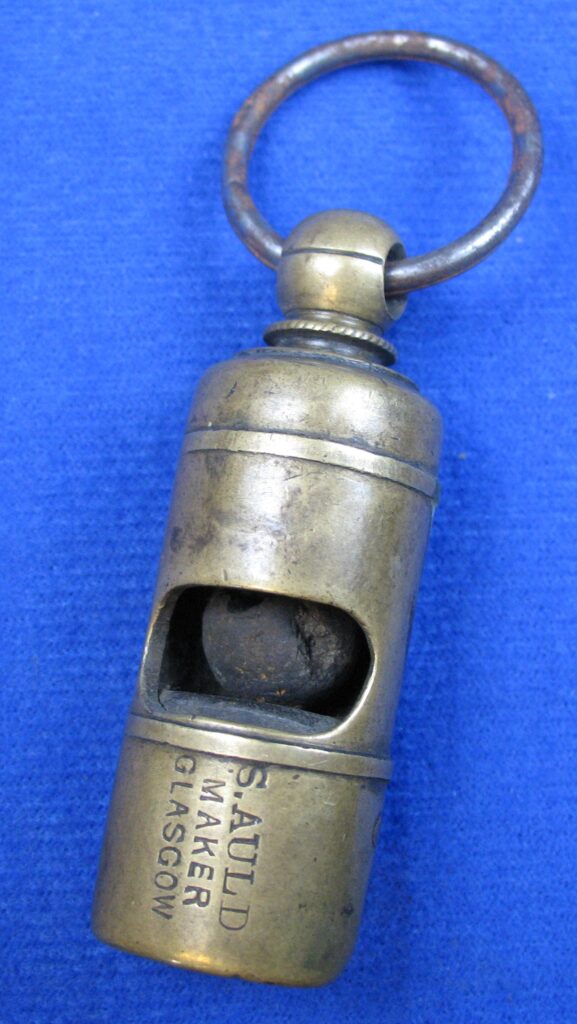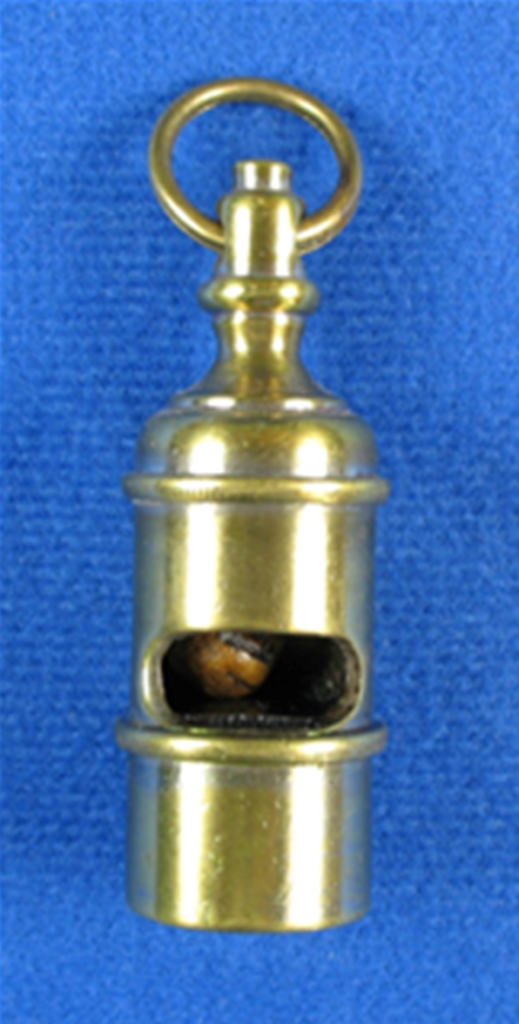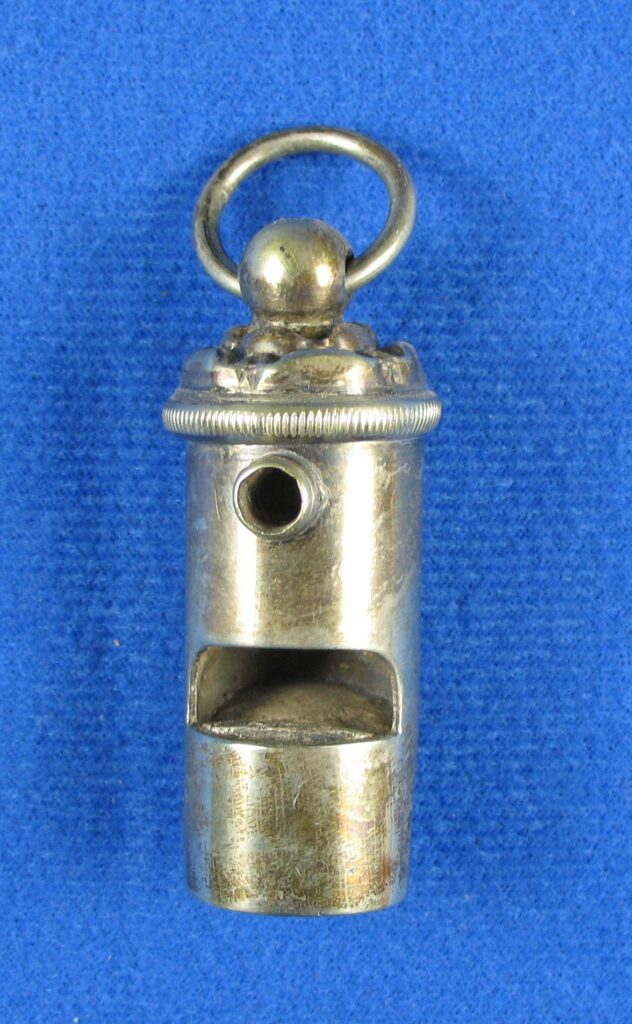Whistory
The variation in whistles often astounds the neophyte to whistle collecting, but our SPOTLIGHT today highlights this even more so. Why? Because these are mixed designs/creations from existing whistles.
The J. Guttridge Whistle Collection
Let’s take a look together at the works of American whistle designer James “Jimmy” Guttridge. First off we show his entire collection offered for sale !!! He has set the price at $4,000.00 US and you may contact him direct at [email protected] if interested.
Our interest here is to look at the design variations in whistles. Zoom in for closer and individual examination if you please.
The contents of the Guttridge whistle collection
30 whistles of remarkable variety and inventiveness. We find extractors, beauforts, dog, bell whistles and our favorites — round whistles, that we will compare section by section to existing whistles. Today we see fabricated whistles, with minor modifications and fakes. However James Guttridge ‘recreations’ fall into the realm of art, ingenuity and novel designs..
But where did he get his ideas? What influences can be seen? Let’s try to see as we look a little closer at the influences from historic whistle makers…
Whistle Classification
| Category | bell escargot slider dog round extractor gadget |
| Order | Jim Guttridge |
| Type | general |
| Class | brass |
Whistle Archaeology
Original creations from parts, ornaments and milling.
Whistology
Bell whistle
First up, we see the 3 top whistles, and clearly seen is the influence of Stevens and Sons bell whistles. Originally designed by Richard Porteous, developed mid-1800s, is the bell-shaped whistle that unscrews into several components and reminiscent of railway steam whistles.
They are quite high pitched for their looks and size – a very skilled whistle and maker. James strives to follow that tradition several times and you can compare them to an original from The Whistle Gallery reference collection.
Dog whistle
Next up is a couple of dog whistles seen just below the 3 bells and also to the far left. Earliest known work in the ‘silent’ range of hearing is credited to Sir Francis Galton whose work was in the late 1800s. The first whistle models for release by Hudson came decades later circa 1930s.
Perhaps others preceded them. An example from our reference collection shows the components used to create a very high pitch, somewhat out of the human range.
Slider
Dead center is wonderfully artistic version of a slider, possibly the best piece in the group. Typically, plain and functional the slider whistle has been around since the mid 1800s. Pictured from The Gallery reference collection.
Also pictured is another model, from Walberg and Auge an American sound effects maker for drummer’s traps Manufacturers never really strayed much before or after that, when it came to the mouthpiece or body of the whistle, but James Guttridge did.
Beaufort whistle
Back to the pictured collection, a couple whistles located on the left and one on the far-right highlight some of the best aspects of the beaufort ( conical ) whistle.
Typically, beauforts are conical shaped with a simple round knop — they can be very plain. Additionally, ones that had more variation, were recycled in trade with the release of the Metropolitan of the 1880s. Many were taken in on trade as promotional and we do not see them often enough.
Yes, there are stamped variations and here and there some rolled mouthpieces. However, John Barrall circa 1880s and Joseph Hudson circa 1880s, designed somewhat ornate models with cast mouthpieces and elaborate tops that have survived till today. A couple examples from The Whistle Gallery reference collection are shown to reveal the possible influence upon James’ work.
Extractor whistle
Center and a couple above the slider is an extractor and bottom left another one. Both straight models. These were used in hunting to pull or extract a shell from a shotgun after shooting.
They often had the gauge number such as 12 stamped on the base. Of course, a dog whistle would be needed and so we see many combinations. Compare them to a USA maker and a UK made one. Then look back at creations by J. G.
Round whistle
Lastly, we peruse all the remarkable variations of round whistle designs. Having just one window, they always face forward, don’t they? James uses every variation plus extra. The mouthpieces and the tops are off the grid by anyone’s opinion.
Rounds date back to the early 1800s and can command remarkable prices, as can thebells, beauforts, and extractors.Here area fewrounds to compare the influence of previous whistle makers.
Of course, his personal and artistic accomplishments can be seen really coming out here. What can’t be overlooked is that they are many times made with his own signature design, quite unique.
The Gallery contains a variety of Samuel Auld’s round whistles and we picture one circa 1880s, as it very typical — very heavy and a good comparison. Also shown is an example by Alfred DeCourcy circa 1900s and one by Joseph Hudson circa 1900s with the ornate Tudor rose top.
Conclusions:
We hope you have enjoyed this SPOTLIGHT highlighting a talented American whistle maker (and avid collector) — James Guttridge. As stated in the beginning of the article, he is open to selling the entire collection. It has taken years to design and so many hours of work that it would be hard if not difficult to sell them off. Yet true art is best shared and passed on.
We have used this collection as a vehicle to show and inform you more about whistles, our main goal. It was nice to highlight American whistles too. Not that one country is above another, for great whistles come from around the world. We should all be trying to spread out an increasingly panoramic view of what is available out there in ‘whistledom’ — or in this case what can be made.
TWG
Posted March 3, 2012
Revised May 19, 2018
Revised February 13, 2021
Revised December 27, 2021
Revised December 29, 2021
Revised January 30, 2022
Bibliography:
Reference Collection Whistle Gallery
© – All photos with blue background property of The Whistle Gallery reference collection. Please contact The Whistle Gallery for permission of use of any website content. Spotlight articles are copyrighted. Please contact The Whistle Gallery for permission of use of any website or Spotlight article material written or otherwise. Use of photos without authorization is prohibited.
Where to Learn More:
Spotlight > Collectors and Collections
Spotlight > By Whistle Category > Bell Whistle Articles (Circumferential)
Spotlight > By Whistle Category > Escargot Whistle Articles
Spotlight > By Whistle Category > Slider Whistle Articles
Spotlight > By Whistle Category > Dog Whistle Articles
Spotlight > By Whistle Category > Round Whistle Articles
Spotlight > By Whistle Category > Extractor Whistle Articles
Spotlight > By Whistle Category > Gadget Whistle Articles
